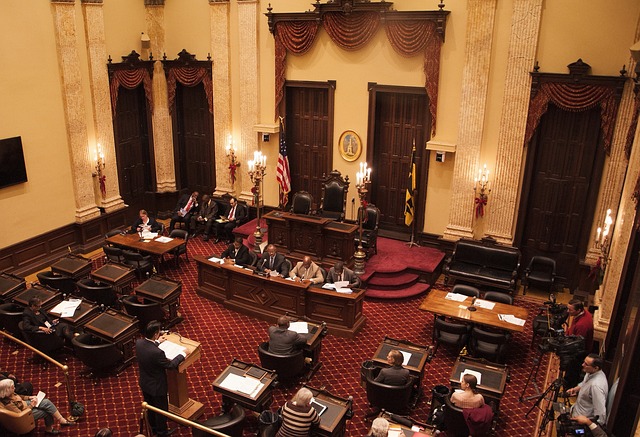Government operations are determined by the leadership of public administrations and parliaments. These lawmaking sectors are meant to be a critical reflection of the diverse populations they represent. This representation must include their gender composition. This variable is key to ensuring fairness and responsiveness from these key state institutions. The goal of achieving gender equality in positions of governance is a complex concept that goes deeper than equal parliamentary and ministerial seats. This representation must be identical in all spheres so that all genders can access such positions equally. Enabling this diversification of lawmaking chambers allows all parties to participate in decision-making on an equal basis subsequently.
Achieving a progressive gender balance in politics is necessary for inclusive work environments. Allowing all parties equal access to leadership roles will help prepare and encourage them to exercise their civic duties more energetically. Functions such as chairs of parliaments and parliamentary committees are crucial to bridging the gap between genders. Equal representation in these positions helps remove the socioeconomic barriers to political participation. Women are usually discouraged from participating in politics through gender-mainstreamed and targeted public policies.
The figures show that the situation is still critical. The statistics show that women’s leadership and political participation are essential to reaching Sustainable Development Goals by 2030. Political data reflects a case of women being underrepresented at all levels of decision-making worldwide. Most critical government areas have very little to no gender parity.

Women in executive government positions
Studies as recent as 19 September 2022 have shown that out of 195 recognized nations, only 28 Heads of State or government are women. This translates to just over 14% of the world. This rate shows that gender equality in the highest positions of power may not be attainable for humanity for another 130 years.
To further break up these figures, we can see that 13 countries have a woman Head of State. This subtraction leaves only 15 countries with a woman Head of Government. This means that women govern only 7% of the world. This gross disparity trickles down into the ministerial positions. Women only hold these positions in 21% of government ministerial offices. Out of all 195 countries, only 14 have reached the 50% quota for women in cabinets.
The current speed of gender parity in ministerial positions is currently at 0.52% per annum. When you extrapolate this figure, ministerial positions will likely become gender equal by 2077.
The breakdown of positions commonly held in ministerial offices by women are:
- Family/children/youth/elderly/disabled & Social affairs.
- Environment affairs/natural resource management/energy production.
- Employment offices/labor disputes/vocational-on-the-job training, women and children’s affairs/gender equality programs.
Women in national parliaments
As of September 2022, all the lawmaking chambers worldwide are filled up by only 26% of women. This figure is relatively low, although it is 11% higher than in 1995. This statistic is relevant because it represents the percentage of all national parliamentarians.
One hundred ninety countries have failed to implement the 50% quota for women’s representation in Parliament. Only five countries have achieved this gender parity in single or lower houses.
Examples of these countries include:
- Rwanda – 61%
- Cuba – 53%
- Nicaragua 51%
- Mexico 50%
- The United Arab Emirates has 50%
The statistics show that at least 27 other countries have implemented a cabinet with 40% women. Most of these countries are in Europe, and some are in Latin America. There are only five in Africa; however, more than two-thirds of these countries have applied gender quotas. This procedure involves legislating candidate quotas or reserved seats. These electoral reforms work towards opening space for women’s political participation. The result is an often more excellent representation of women in national parliaments globally.
Some nations, however, are relatively low in gender disparity. Twenty-four countries have less than 10% representation by women in either single or lower houses. There are three nations where there is not a single woman participating in lower chambers at all. This statistic shows that there will likely not be gender parity in national legislative bodies until 2063.
- Looking specifically at Latin America and the Caribbean, the data shows women are responsible for 30% of parliamentary seats.
- Sub-Saharan Africa data shows that women are responsible for 26% of parliamentary seats.
- Eastern Asia and South-eastern Asia data show that women are responsible for 22% of parliamentary seats.
- Northern Africa and Western Asia data shows that women are responsible for 21% of national parliaments.
- Central Asia, Southern Asia, and Oceania have some of the lowest at less than 20% of women in Parliament.
Women in local government
Data from September 2022 revealed that from a sample of 136 countries, there are only 3 million elected women members in local deliberative bodies. This figure is critically low and represents only 34% of lawmakers from these 136 countries. This figure is composed mainly of two countries that have reached 50%. Of the countries on the list, only 20 achieved a 40% quota for women in local government.

A regional breakdown of these figures shows that women’s representation in local deliberative bodies in:
- Central and Southern Asia were at 41% representation.
- Europe and Northern America were at 36% representation.
- Oceania was at 32% representation.
- Eastern and South-Eastern Asia were at 28% representation.
- Latin America and the Caribbean were at 25% representation.
- Sub-Saharan Africa was at 25% representation.
- Western Asia and Northern Africa were at 18% representation.
Expanding participation
An internationally agreed standard is the key to achieving a balanced and stable political participation and power-sharing rate. Achieving gender balance will require ambitious policy targets for gender parity (50–50).




































